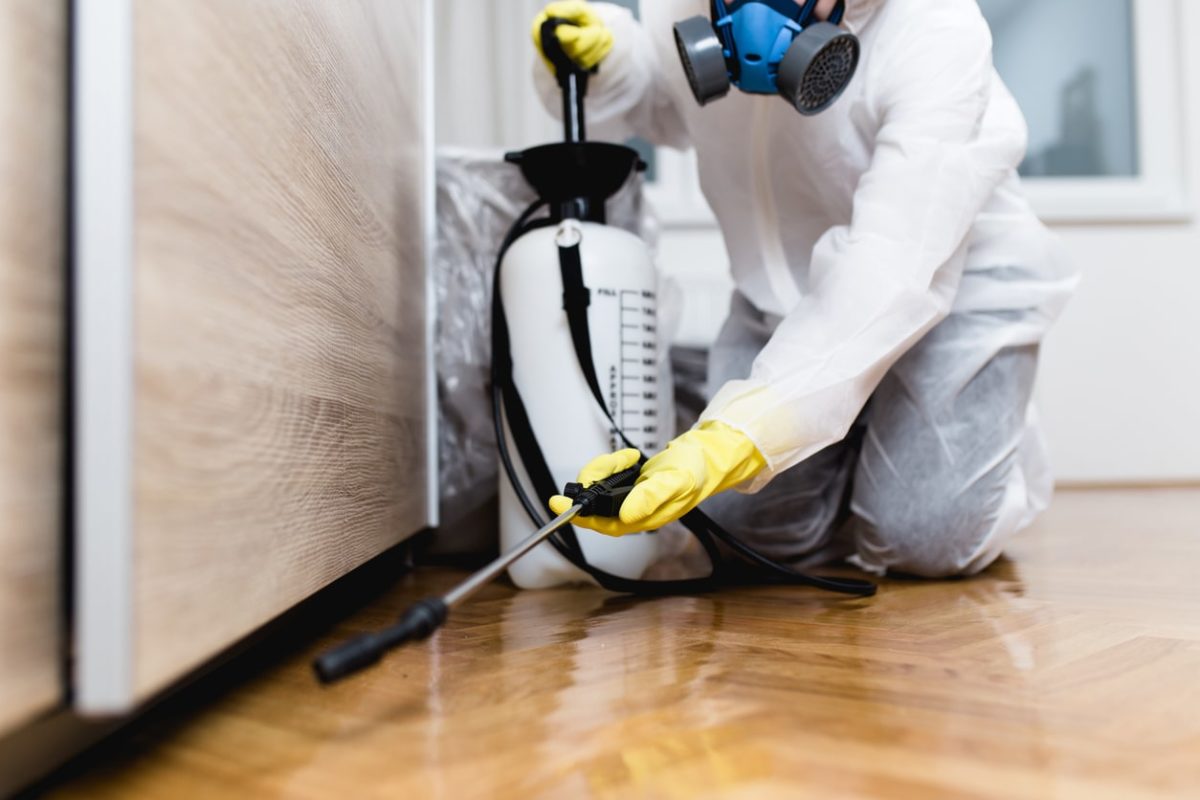Eco-Friendly Parasite Control Approaches for Handling Wild Animals in Urban Locations
Urban areas usually locate themselves at the intersection of human activity and wildlife, leading to special difficulties in parasite administration. Environment-friendly strategies highlight lasting conjunction, utilizing methods such as environment alteration and all-natural repellents to minimize human-wildlife problems. These strategies not only safeguard the atmosphere however also improve neighborhood engagement in wildlife management. As metropolitan populaces remain to expand, recognizing the characteristics of wild animals interactions comes to be progressively critical. What cutting-edge methods can be carried out to make certain both environmental equilibrium and city security? Exploring this concern discloses a compelling landscape of possible remedies.
Understanding Urban Wildlife Dynamics
Recognizing Urban Wildlife Dynamics is necessary for establishing efficient and environment-friendly bug control techniques. Urban areas are increasingly ending up being environments for different wild animals types, driven by variables such as habitat fragmentation, food schedule, and human encroachment. Acknowledging these dynamics enables a nuanced approach to pest administration that aligns with ecological concepts.
Urban wildlife often consists of species such as raccoons, squirrels, and birds, which adapt to city atmospheres, finding niches in eco-friendly spaces, parks, and also houses. Their visibility can cause problems with humans, specifically when they manipulate human sources for food and sanctuary. Understanding the habits and eco-friendly functions of these species informs techniques that lessen negative interactions while advertising biodiversity.
Furthermore, recognizing the interdependencies within metropolitan ecosystems assists in recognizing crucial locations for habitat preservation and remediation. This knowledge adds to the development of incorporated pest monitoring (IPM) techniques that consider the environmental balance, thus reducing dependence on harmful chemicals. By fostering conjunction between human beings and metropolitan wildlife, cities can develop much healthier environments that profit both citizens and regional environments, leading the way for lasting metropolitan living.
All-natural Repellents and Deterrents
All-natural repellents and deterrents supply a lasting choice to standard bug control approaches by harnessing the power of nature to maintain unwanted types at bay. These eco-friendly options commonly make use of plant-based active ingredients, necessary oils, and other normally happening substances that deter pests without damaging the atmosphere.
One efficient natural repellent is peppermint oil, which is recognized to fend off rodents and pests. Its solid scent is unpleasant to several bugs, making it a preferred option for metropolitan settings. Similarly, vinegar and citrus peels can work as deterrents, as their strong smells are generally uninviting to different wildlife.
Furthermore, diatomaceous earth is an all-natural powder that can be spread in areas susceptible to insect activity, successfully dehydrating and discouraging pests without posing threats to non-target varieties. In addition, garlic sprays and neem oil are acknowledged for their capacity to push back a variety of bugs, including both bugs and bigger wildlife.
Implementing these all-natural repellents not only minimizes dependence on chemical pesticides however also advertises a much healthier urban ecological community, fostering a much more balanced conjunction between people and wildlife. By using these techniques, urban areas can effectively handle insect populations while reducing ecological impact.
Habitat Alteration Strategies
Efficient environment modification methods play a crucial function in sustainable bug management by modifying the environment to make it much less conducive to pest invasions. By understanding the ecological characteristics of city locations, property proprietors can apply strategic alterations that prevent pests while advertising biodiversity.
(Carpenter ant control Port Charlotte)One main method involves keeping proper cleanliness. This includes normal waste elimination, protecting garbage can, and removing standing water to decrease breeding sites for bugs and rats. In addition, landscaping practices such as picking indigenous plants can enhance ecological equilibrium, offering habitats for valuable organisms while minimizing resources for insects.
Another crucial strategy is to secure access points in buildings. Examining and fixing splits in foundations, wall surfaces, and home windows can dramatically lower parasite accessibility. Producing physical barriers, such as fencings or plant buffers, can inhibit wild animals motion right into human-inhabited areas.
Integrated Insect Administration Practices
Structure upon environment modification methods, incorporated insect management (IPM) practices offer an all natural strategy to managing pest populaces while decreasing environmental influence. IPM integrates numerous methods, consisting of biological, social, mechanical, and chemical controls, to attain reliable insect management.
Organic control involves the introduction of natural predators or parasites to lower parasite populaces. Cultural techniques, such as plant rotation and sanitation, disrupt pest life cycles and decrease their environments - Pest control service. Mechanical controls, like traps and barriers, provide immediate alleviation from insect stress without chemical intervention
Chemical controls are made use of as a last hotel, focusing on targeted applications that restrict damage to non-target varieties and the setting. The choice of eco-friendly chemicals, when needed, is indispensable to the IPM framework. Furthermore, keeping track of pest populations and examining potential damage assists inform decision-making, guaranteeing that interventions are timely and reliable.
Neighborhood Participation and Education

(Fire Ant Control)Workshops and informational sessions can equip residents with understanding about native varieties, habitat preservation, and efficient non-toxic bug monitoring techniques. Partnership with colleges, regional companies, and federal government agencies additionally enhances academic outreach, ensuring that essential information reaches varied target markets.
Furthermore, community-led efforts, such as area clean-up days and habitat repair projects, not just advertise biodiversity yet additionally strengthen community ties. Pest Control. By encouraging homeowners to share their experiences and monitorings, communities can create targeted techniques that address certain local bug problems
Integrating feedback from homeowners into bug administration prepares makes it possible for an extra receptive and adaptive method to wild animals challenges. Eventually, educated and engaged communities are vital to achieving lasting success in eco-friendly parasite control, bring about healthier urban atmospheres that value both human and environmental needs.

Final Thought
In final thought, environmentally friendly parasite control approaches deal lasting options for taking care of urban wildlife. By focusing on environment adjustment, utilizing natural repellents, and carrying out integrated bug imp source administration techniques, communities can foster a harmonious coexistence with local fauna.